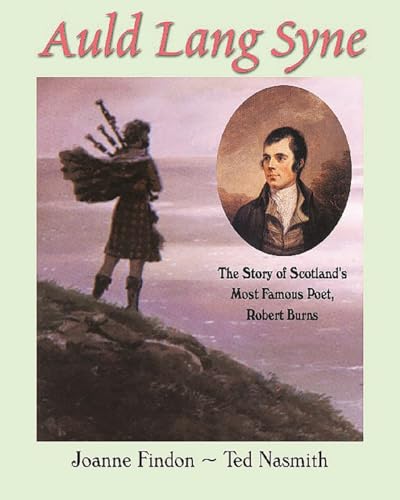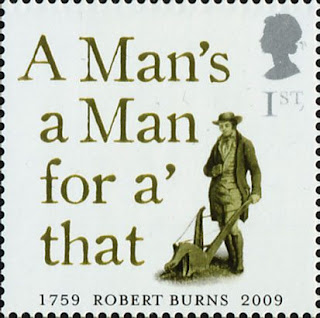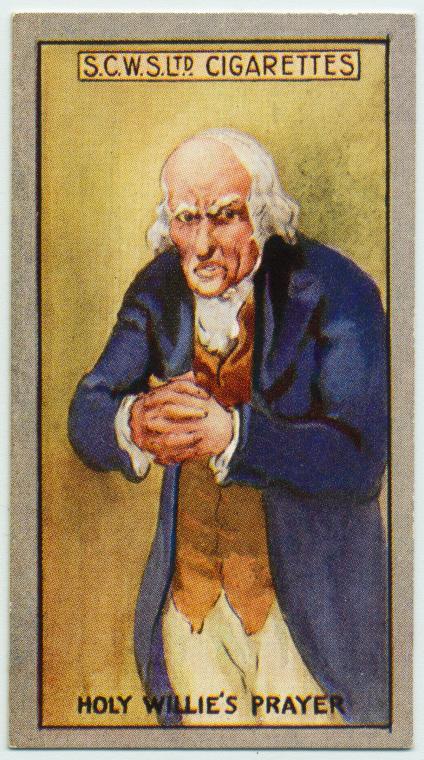TOP 10 Robert Burns Poems MUST Read In English Literature
Robert Burns, the national poet of Scotland, is celebrated for his lyrical poetry, heartfelt ballads, and keen observations of human nature. His works, which are occasionally written in the Scots dialect, tackle timeless subjects that are still relevant to readers today while encapsulating the spirit of his day.
1. To a Mouse

“To a Mouse” is one of Robert Burns’s most famous poems, written in 1785. “Wee, sleekit, cow’rin, tim’rous beastie, / O, what a panic’s in thy breastie!” are the poem’s well-known opening words. Burns examines the similarities between the experiences of humans and animals in this moving piece, highlighting the fragility and unpredictable nature of life. The complete title of the poem, “To a Mouse, on Turning Her Up in Her Nest with the Plough,” is sometimes omitted, but it is nonetheless a timeless statement of empathy and consideration for the effects of human behavior.
2. A Red, Red Rose

“A Red, Red Rose,” written in 1794, is a beautifully romantic poem that captures the enduring nature of love. Burns’s verses, “O my Luve’s like a red, red rose, / That’s newly sprung in June,” convey the freshness and intensity of the poet’s emotions. The imagery and sentiment expressed in this poem have made it a favorite for lovers and a timeless representation of enduring love.
3. Auld Lang Syne

Undoubtedly the most well-known song by Robert Burns, “Auld Lang Syne” is sung to celebrate the start of a new year and say goodbye to the previous one. The literal translation of “auld lang syne” is “old long since” or “days gone by.” The spirit of friendship, nostalgia, and time passing are all captured in this poem. Burns’s famous line, “Should auld acquaintance be forgot, / And never brought to mind?” is particularly memorable during New Year’s Eve festivities worldwide.
4. Tam O’ Shanter

“Tam O’ Shanter,” written in 1790, is one of Burns’s longer narrative poems and a masterpiece of Scottish literature. The poem narrates the tale of Tam, a farmer who, on a stormy and violent night, comes into otherworldly entities.
Also Read-
- A Red Red Rose poem Summary by Robert Burns
- Bells for John Whiteside’s Daughter Summary by John Crowe Ransom
- As Kingfishers Catch Fire Summary by Gerard Manley Hopkins
“Tam O’ Shanter” is a compelling and timeless work because of its vivid descriptions, rhythmic storytelling, and examination of human foolishness.
5. To a Louse

“To a Louse” is a satirical poem written in 1786 that humorously addresses the superficial judgments people make about each other. The poem begins with the lines, “Ha! whaur ye gaun, ye crowlin ferlie! / Your impudence protects you sairly.” Through the lens of a louse crawling on a lady’s bonnet during church service, Burns critiques societal vanity and the tendency to look down on others.
6. A Man’s a Man for A’ That

“A Man’s a Man for A’ That,” written in 1795, is a powerful expression of Burns’s egalitarian beliefs. The poem celebrates the inherent worth and dignity of all individuals, regardless of their social status. Burns’s famous lines, “The rank is but the guinea’s stamp, / The man’s the gowd for a’ that,” underscore his commitment to the idea that true value lies in a person’s character rather than their societal standing.
7. Holy Willie’s Prayer
“Holy Willie’s Prayer” is a satirical poem written in 1785 that takes aim at religious hypocrisy. The poem presents the titular character, Holy Willie, as a sanctimonious and self-righteous individual whose prayers are revealed to be insincere. Burns’s sharp critique of hypocrisy within organized religion makes this poem a notable work of social commentary.
8. Address to a Haggis

“Address to a Haggis” is a lively and humorous poem written in 1787 that pays homage to Scotland’s iconic dish, haggis. The poem, which is frequently read at Burns Suppers, enthusiastically and creatively honors the delicious treat. Burns’s poetry encapsulates the essence of Scottish pride and food appreciation, which is why it is such a cherished aspect of Scottish cultural customs.
9. The Twa Dogs

“The Twa Dogs” is a narrative poem written in 1786 that features a conversation between two dogs—one belonging to a wealthy man and the other to a poor farmer. Through the dogs’ dialogue, Burns explores social inequality, the impact of societal structures on individuals, and the nature of contentment. The poem serves as a thoughtful reflection on class distinctions and the simplicity of a life lived in harmony with nature.
10. John Anderson, My Jo
“John Anderson, My Jo” is a tender and nostalgic love poem written in 1796. The poem expresses enduring love and devotion between an elderly couple. Burns’s verses, “John Anderson, my jo, John, / When we were first acquent,” beautifully capture the passage of time and the strength of a love that withstands the trials of life. The poem resonates with readers for its poignant portrayal of lifelong companionship.
Conclusion
Robert Burns’s poetry, steeped in the richness of Scottish culture and infused with universal themes, remains a treasure in English literature. From the poignant empathy of “To a Mouse” to the romantic resonance of “A Red, Red Rose” and the social commentary of “A Man’s a Man for A’ That,” Burns’s work spans a wide range of emotions and topics. His ability to capture the essence of human experience, coupled with his keen observations of society, has solidified his place as a literary giant.
Readers will travel through Scottish landscapes, the complexity of interpersonal relationships, and the enduring power of love and reflection as they delve into these top 10 poems by Robert Burns. The fact that Burns’ poetry is still cherished around the world is evidence of both the enduring power of his poetry and the unwavering character of the Bard of Ayrshire.
FAQ.
1. Why is “To a Mouse” considered one of Robert Burns’s best poems?
“To a Mouse” is considered one of Robert Burns’s best poems for its poignant exploration of the vulnerability and unpredictability of life. The poem’s empathetic portrayal of a mouse disrupted by human activity resonates with readers, and its famous opening lines are widely recognized in literary circles.
2. What makes “A Red, Red Rose” a beloved poem?
“A Red, Red Rose” is beloved for its timeless expression of enduring love. Burns’s vivid imagery and heartfelt verses capture the freshness and intensity of romantic emotions. The poem has become an iconic representation of love’s enduring nature, making it a favorite for lovers and a classic in the realm of romantic poetry.
3. Why is “Auld Lang Syne” so famous?
“Auld Lang Syne” is famous for its association with New Year’s celebrations around the world. The song’s lyrics, expressing nostalgia, friendship, and the passage of time, have become synonymous with bidding farewell to the old year and welcoming the new. The phrase “auld lang syne” itself signifies a reflection on days gone by.
4. What themes does “Tam O’ Shanter” explore?
“Tam O’ Shanter” explores themes of the supernatural, human folly, and the consequences of indulgence. The narrative poem tells the story of Tam, a farmer who encounters supernatural beings during a stormy night. The vivid descriptions, rhythmic narrative, and exploration of human weaknesses make it a captivating work.
5. How does “A Man’s a Man for A’ That” reflect Burns’s beliefs?
“A Man’s a Man for A’ That” reflects Burns’s egalitarian beliefs and his commitment to the inherent worth and dignity of all individuals. The poem celebrates the idea that true value lies in a person’s character rather than their social status, making it a powerful expression of Burns’s social and philosophical convictions.















